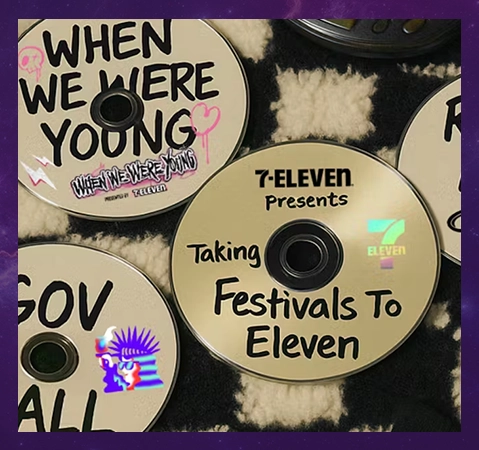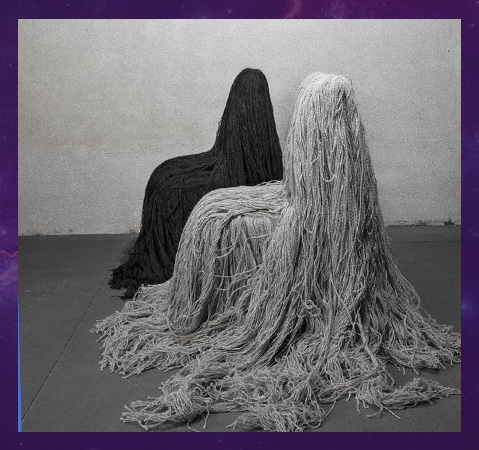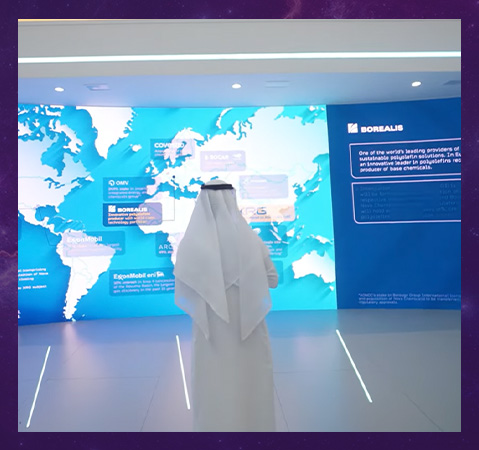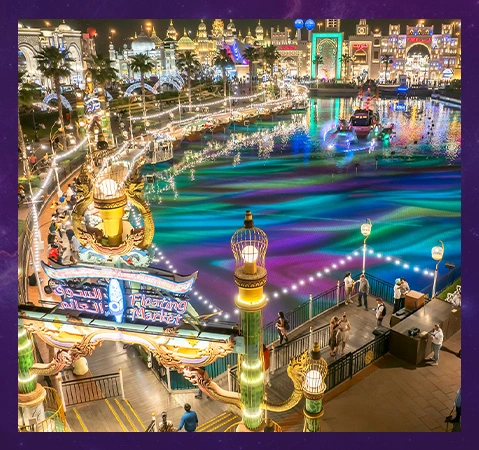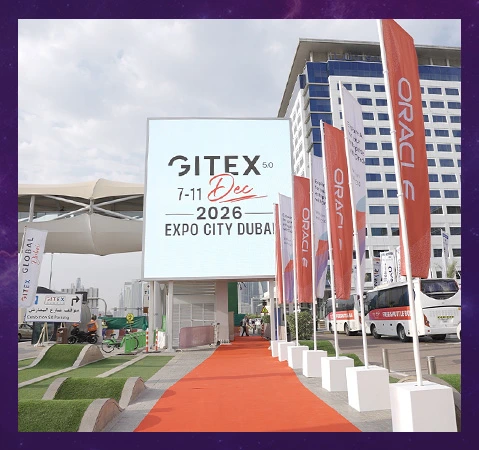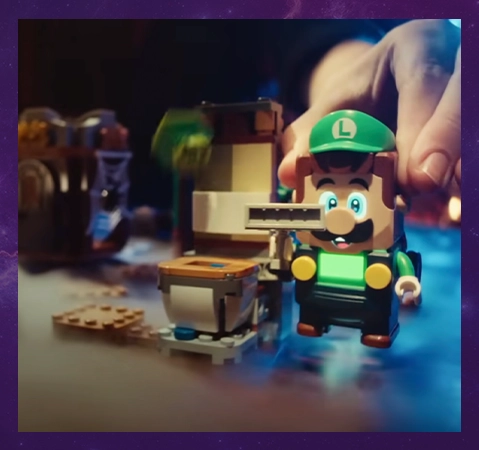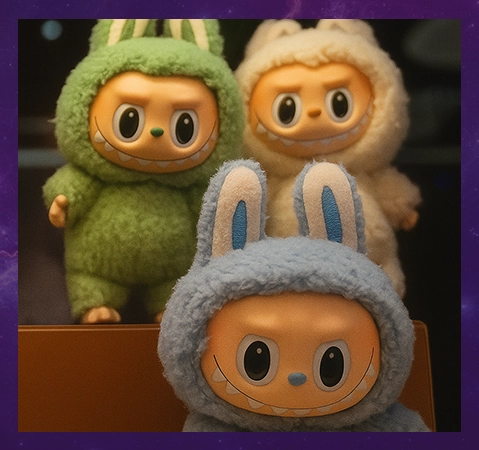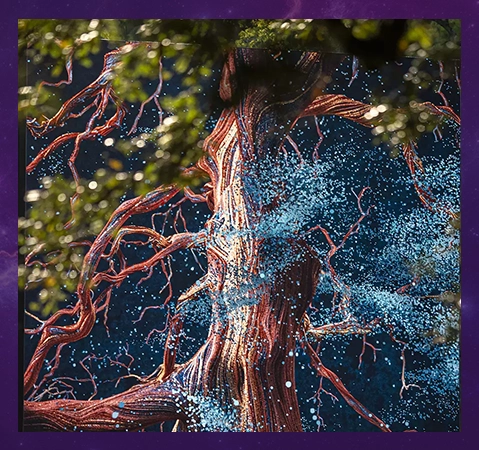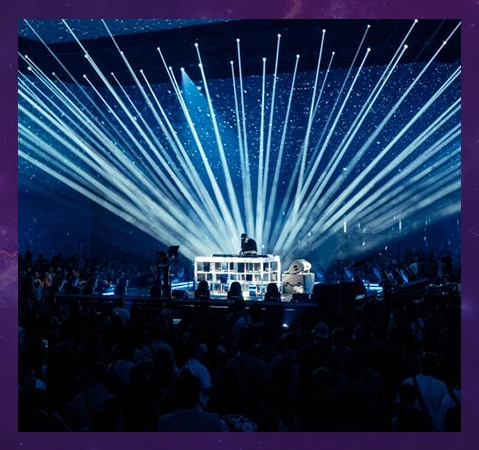
Inside Coachella’s Spectra Tower: How Experiential Architecture Elevates Festival Branding
share

At first glance, it might seem like a mirage. Rising from the golden sands of the Colorado Desert, Spectra Tower at Coachella doesn't just stand tall—it radiates. A seven-story, rainbow-colored architectural marvel, this cylindrical installation has become one of the most photographed and talked-about features at the world-renowned music and arts festival. But beyond its aesthetic pull and social media fame, Spectra is a masterclass in experiential event design, symbolizing how immersive technology and bold architecture can deepen a festival’s cultural imprint and strengthen its brand identity.
Created by British design studio NEWSUBSTANCE, Spectra isn’t just an art installation—it’s a journey. As festivalgoers ascend the winding internal ramp, they’re enveloped in shifting hues of colored glass, each step altering their perception of the desert outside and the community inside. It’s a rare moment of contemplative stillness amid the pulse of music and crowds, offering panoramic views of the sprawling Empire Polo Club grounds from the top floor. What’s brilliant is how it taps into human emotion, nostalgia, and curiosity, encouraging people to see the world—quite literally—through a different lens.
While Coachella has long been synonymous with iconic performances by artists like Beyoncé, Bad Bunny, Billie Eilish, Blackpink, and Kendrick Lamar, Spectra represents another kind of headline act: one that doesn’t play music, but makes people feel. It’s no coincidence that the tower has become a pilgrimage point for influencers, artists, and everyday attendees alike. In many ways, it reflects the evolution of music festivals into multisensory experiences—where interactive installations, architecture, and atmosphere are as central to the event as the performances themselves.
From its technicolor skin to its swirling interior ramp, Spectra is more than an art piece—it’s a conversation in color, light, and movement. In the following sections, we’ll explore how Spectra blends art and architecture to elevate Coachella’s brand, fosters and stands as a symbol of how design can emotionally engage a global audience.
A Beacon of Color: Designing for the Instagram Age

When the Spectra Tower first appeared at Coachella in 2018, it didn’t just catch the eye—it rewired the visual memory of the festival itself. Designed by UK-based studio NEWSUBSTANCE, the 54-foot-tall, 7-story structure became an immediate focal point, both physically and digitally. Its vibrant rainbow façade, made from panels of semipermeable colored glass, was engineered not only for aesthetic impact but for interactive displays and visual storytelling. As light filtered through the hues at different times of day, the tower transformed—glowing amber at sunset, pulsating neon at night, and radiating pastel tones in the morning.
In an era where visual culture dominates how we experience public spaces, Spectra was designed with shareability in mind. NEWSUBSTANCE openly acknowledged Instagram as a core influence in its conception. The tower offers an immersive 360-degree ramp that slowly guides visitors upward, revealing changing perspectives of the desert and festival below. Every angle is photo-ready, but none are static—each visitor captures a unique blend of light, reflection, and landscape.
What sets Spectra apart from other installations is its dual function: it is both an artistic landmark and a brand activation tool. By giving attendees a space that feels both surreal and deeply personal, Coachella taps into the psychology of social sharing. The more people document their journey through the tower, the more the festival extends its reach—organically, emotionally, and visually.
Spectra is not just a backdrop—it’s a tool of event marketing, proving that architecture designed for presence can also serve as a long-lasting imprint in the digital sphere.
2. Walking Through Light: The Power of Immersive Architecture
The Spectra Tower isn’t meant to be admired from a distance—it’s designed to be entered, climbed, and felt. At its core, Spectra is a study in how architecture can move beyond structure to create emotional resonance. As visitors step inside, they’re enveloped by a continuous spiral ramp, gently ascending through a spectrum of color. Each windowpane is coated in dichroic glass, filtering sunlight into vivid gradients that shift with time and motion. What begins as visual curiosity becomes a contemplative, sensory journey.
Unlike traditional art installations that are static or observational, Spectra is kinetic through experience. The way light interacts with the tower changes from morning to night, making each visit distinct. This architectural fluidity invites visitors to slow down, reflect, and engage with their surroundings in ways that are rare at fast-paced music festivals. At the top, a panoramic view of the Coachella Valley offers a reward not just of scenery, but of perspective—framed by the very colors they've walked through.
The creators at NEWSUBSTANCE describe the piece as an “architectural pavilion,” but it behaves more like a mechatronic sculpture. It’s architecture in motion—responsive to the crowd, the sun, and the atmosphere. In this sense, Spectra becomes a physical narrative, one that doesn't require words to communicate. It tells a story through color, elevation, and participation, embodying how kinetic technology and interactive installations can elevate a cultural event into something transformative.
By turning structure into experience, Spectra demonstrates how event technology can create memory, meaning, and moment—far beyond the traditional boundaries of design.
3. Where Art Meets Identity: Coachella’s Brand in 360 Degrees

Coachella has long stood at the intersection of music, art, and culture, but in recent years, its identity has evolved into something far more dimensional. The festival is no longer just a stage for chart-topping artists—it’s a curated environment, where every detail reinforces its ethos of creativity, openness, and future-forward thinking. Spectra Tower plays a central role in this evolution, functioning as a physical manifestation of Coachella’s brand values.
The festival's partnership with NEWSUBSTANCE wasn’t incidental. The design studio’s background in creating stand exhibition design and impactful pavilions for major global events, from the London Olympics to Cirque du Soleil, aligned perfectly with Coachella’s intent to build temporal icons—structures that exist only for a season but linger in collective memory. Spectra isn’t branded with logos or slogans, yet it communicates everything Coachella represents: boldness, color, community, and innovation.
Through Spectra, the festival anchors its identity in more than just music lineups. It becomes a destination for creative agency–level exhibition design and a platform that welcomes cross-disciplinary artistic expression. This integration of architectural storytelling into festival branding marks a broader trend across global cultural events, but Coachella leads with scale and vision. By giving attendees physical spaces that are interactive, photogenic, and emotionally resonant, Coachella reinforces its image not just as a place to attend—but as a world to step into.
Much like Coachella’s Spectra, companies like Sentient By Elysian are redefining how brands tell stories through space. Their feataured video reveals how the team choreographs light, motion, and digital interaction to build narrative-rich installations. As leading exhibition stand builders in Dubai and pioneers in immersive technology, they specialize in creating dynamic, multisensory environments—spaces that engage the visitor emotionally and intellectually. Whether through immersive tunnels, kinetic LED walls, or interactive displays, their approach mirrors the very principles that make Spectra a cultural icon: fluid design, responsive architecture, and meaningful visual storytelling.
4. Why Spectra Still Resonates Year After Year

In a festival landscape known for ephemeral installations, Spectra has defied the norm. What began in 2018 as a one-season marvel has quietly transformed into a cultural fixture—returning year after year, including in 2025, long after its original commission expired.
Its continued presence is rare in the world of stand design and festival architecture, where novelty often takes precedence over longevity. What makes Spectra endure isn’t just its chromatic façade or photogenic spiral—it’s the emotional imprint it leaves behind.
Attendees don’t merely visit Spectra—they revisit it. They recount past climbs, recall moments seen through its stained glass at sunset, and reframe new memories atop its seven-story perch. In doing so, the tower becomes a festival tradition—both anchor and artifact. This ongoing relevance also highlights how temporality doesn’t limit impact. People know they have a narrow window to experience it—and that urgency fuels deeper engagement, both on-site and online.
In Brief!
Spectra Tower is more than an architectural installation—it’s a sensory compass, a social signal, and a brand touchpoint all at once. In a world where experience is currency and design is storytelling, Coachella has tapped into a powerful truth: people remember how spaces make them feel. Through Spectra’s technicolor ramp, glass-filtered light, and elevated vistas, festivalgoers aren’t just capturing content—they’re absorbing identity.
This kind of experiential event architecture doesn’t shout—it resonates. It quietly embeds itself into memory, turning a structure into a story and a brand into an emotion. Spectra proves that when design is immersive, intentional, and emotionally intelligent, it transcends utility and becomes part of the cultural fabric.
Brands across the globe are embracing this shift—including innovators like Sentient By Elysian (SBE), who are redefining spatial storytelling through light, motion, and emotion-rich environments. As a leading event agency in UAE and specialist in exhibition stand contractors in UAE, Sentient reminds us that great design doesn’t end at aesthetics—it begins with connection.






